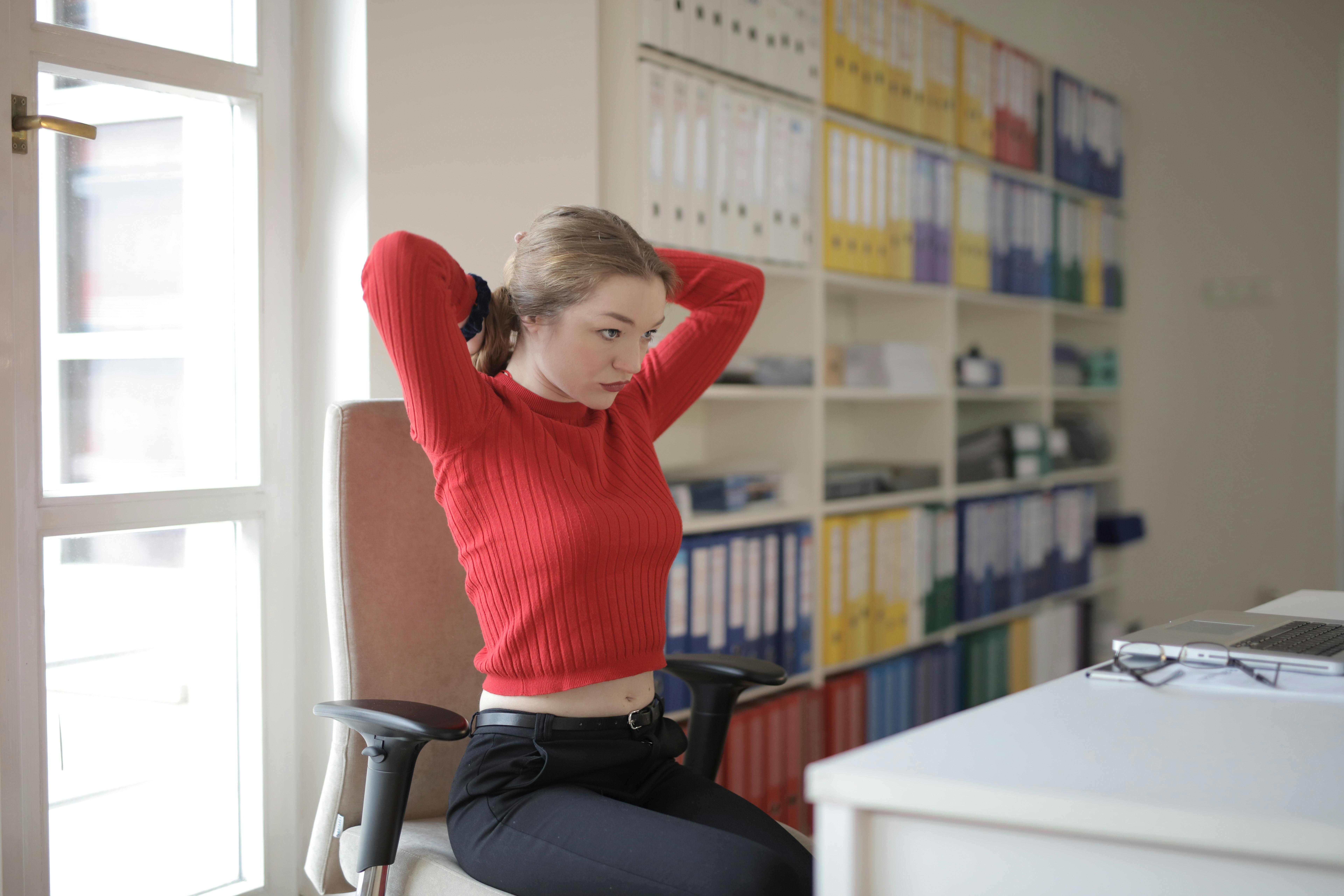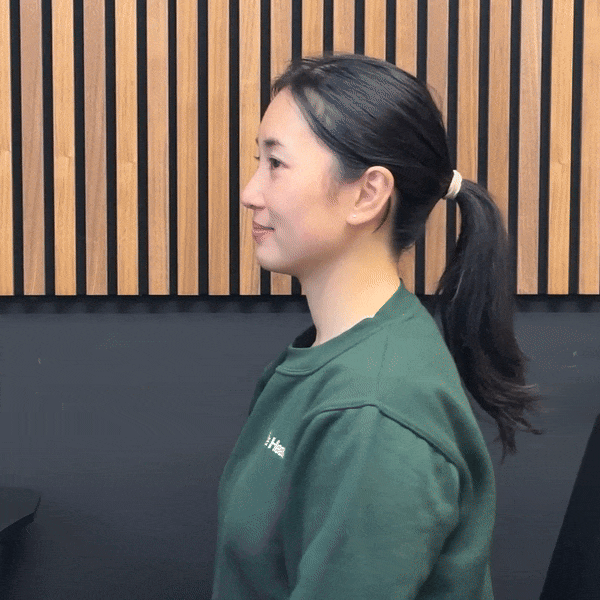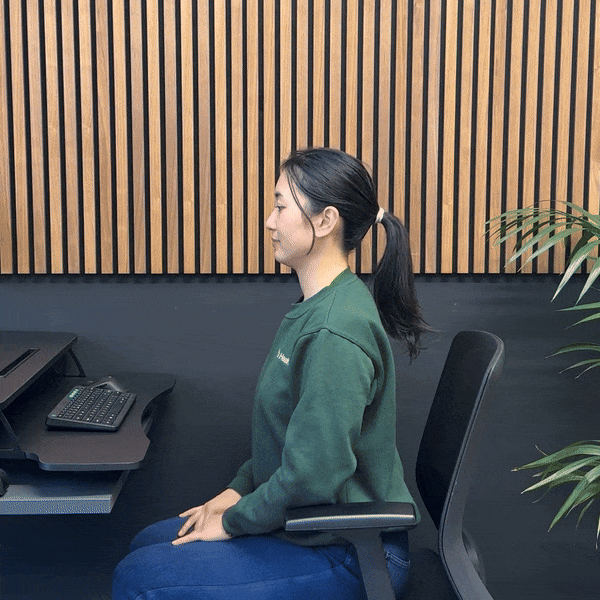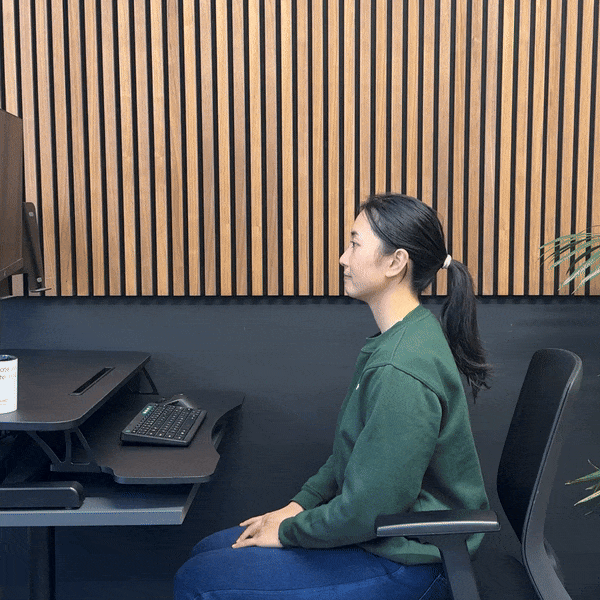



Poor posture is one of the biggest contributors to neck, back, and shoulder discomfort. Long hours at a desk can lead to slouching, forward head posture, and rounded shoulders, all of which put extra strain on your muscles and joints.
Good posture is not just about sitting up straight. It is about training your body to maintain a natural, balanced position with minimal effort. The right stretches can counteract bad habits, relieve tension, and help your muscles support a healthier posture.
Here are three effective desk-friendly stretches to improve posture and reduce strain.
Move in a way that feel comfortable for your body, avoid painful stretching. This is not a subsitute for individual medical advice.

Spending hours looking at a screen often leads to forward head posture, where the head juts out in front of the shoulders. This puts extra pressure on the neck and spine, leading to stiffness and discomfort. The chin tuck stretch strengthens the deep neck muscles, encouraging a more upright posture.
Tip. Keep the movement small. Do not tilt your head up or down. The goal is to align the head over the shoulders, not tuck the chin into the chest.

Sitting in a hunched position for long periods tightens the chest muscles and weakens the upper back, leading to poor posture. The desk cobra stretch opens the chest and strengthens the postural muscles, helping to counteract slouching.
Tip. Keep your neck relaxed and avoid over-arching your lower back. Focus on opening your chest and engaging the upper back muscles.

The way you sit can either reinforce poor posture or train your body to hold itself upright naturally. The invisible string lift is a postural awareness exercise that helps engage the right muscles for better sitting alignment.
Tip. This is not a stretch you "hold" forcefully. Instead, focus on maintaining gentle, natural alignment.
Using these simple movements throughout the day can help reset your posture, strengthen key muscles, and prevent stiffness. Over time, these exercises will train your body to hold itself in a healthier, more natural position, reducing the strain of prolonged sitting.